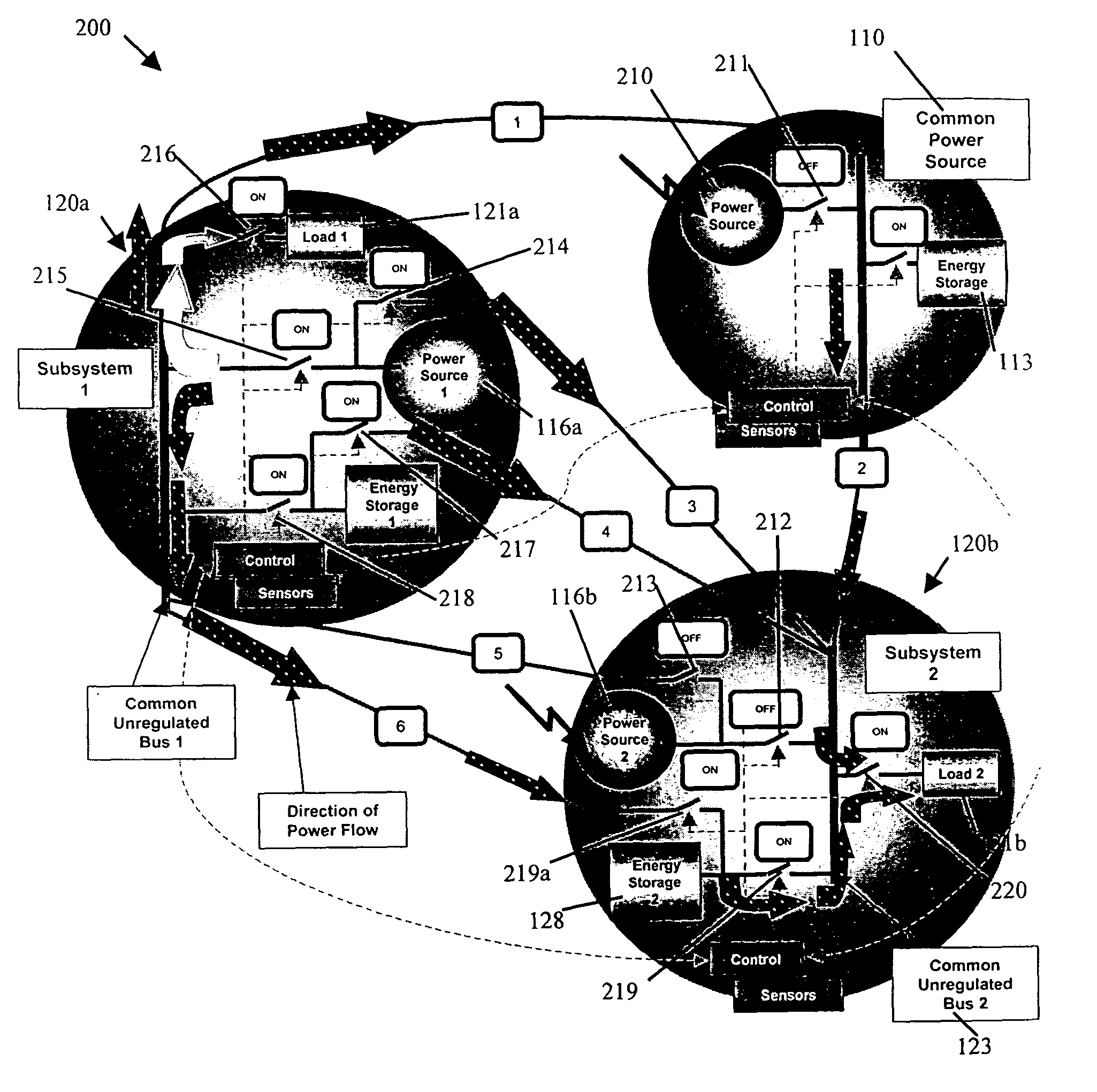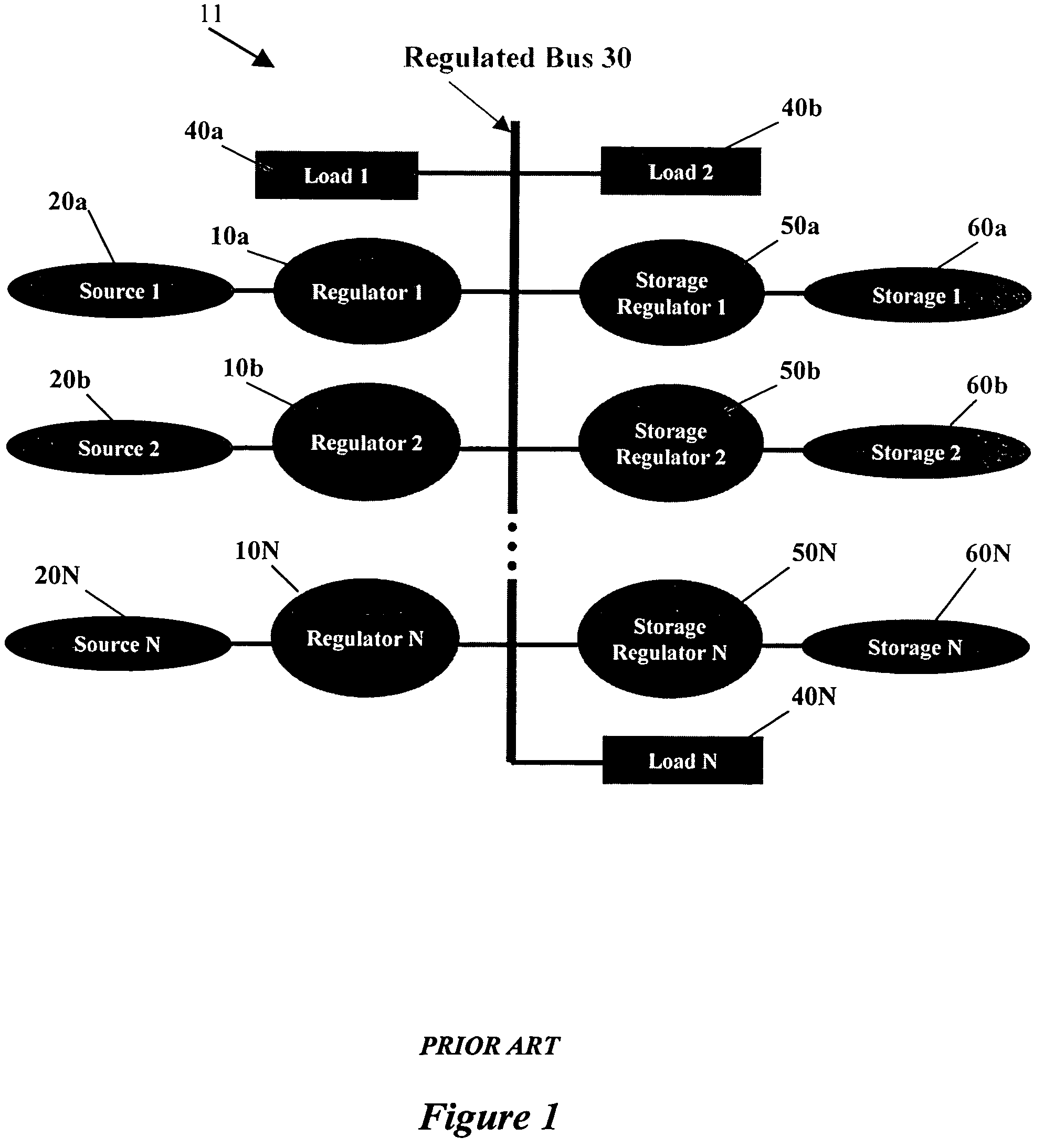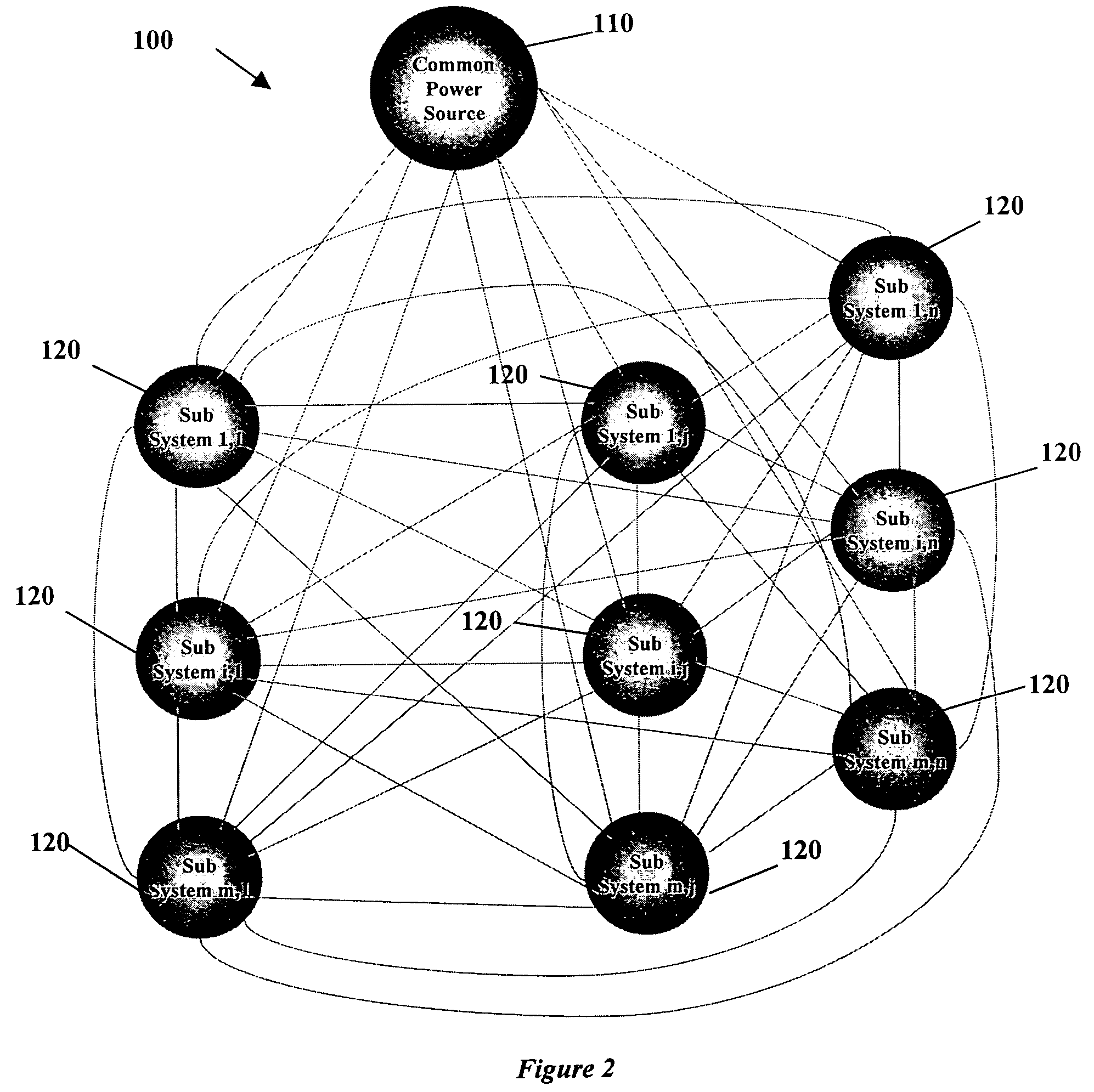Intelligent power system
a power system and intelligent technology, applied in the field of intelligent power systems, can solve the problems of reducing system efficiency, requiring power regulators, and incompatible unregulated energy sources with parallel connection
- Summary
- Abstract
- Description
- Claims
- Application Information
AI Technical Summary
Benefits of technology
Problems solved by technology
Method used
Image
Examples
Embodiment Construction
[0025]The present invention comprises a new power system architecture that resolves the problems associated with conventional power systems and further provides important advantages not available with conventional power system architectures. Autonomous power systems have to satisfy conflicting requirements such as high density, low weight and volume, energy storage, continuous and reliable operation with partial damage, fault isolation and self-generating and restoring capabilities.
[0026]Referring now to FIG. 1, a prior art power system architecture 1 is shown. This architecture 1 uses individual voltage regulators 10a-10N to couple multiple power sources 20a-20N to a common regulated bus 30. The regulated bus 30 is used to provide power to one or more loads 40a-40N. The regulators can be realized as voltage source regulators 10a-10N to couple voltage sources 20a-20N to the regulated bus 30, and also as storage regulators 50a-50N to couple storage sources 60a-60N to the regulated bu...
PUM
 Login to View More
Login to View More Abstract
Description
Claims
Application Information
 Login to View More
Login to View More - R&D
- Intellectual Property
- Life Sciences
- Materials
- Tech Scout
- Unparalleled Data Quality
- Higher Quality Content
- 60% Fewer Hallucinations
Browse by: Latest US Patents, China's latest patents, Technical Efficacy Thesaurus, Application Domain, Technology Topic, Popular Technical Reports.
© 2025 PatSnap. All rights reserved.Legal|Privacy policy|Modern Slavery Act Transparency Statement|Sitemap|About US| Contact US: help@patsnap.com



